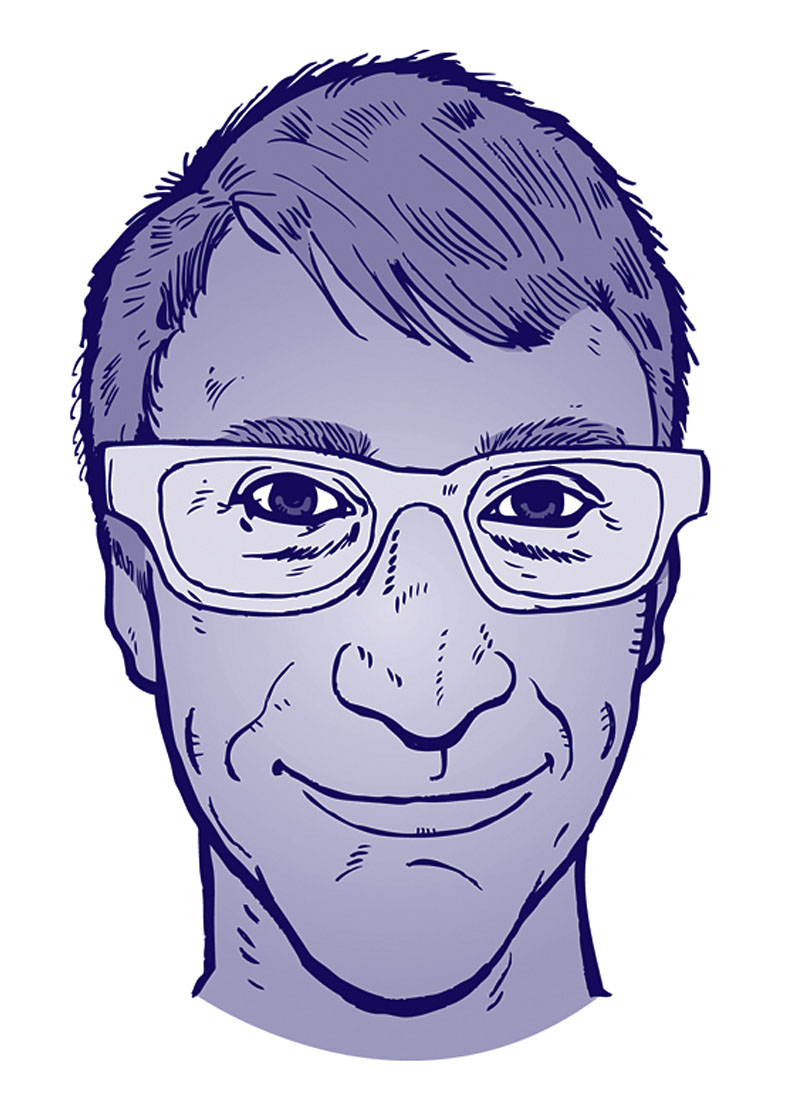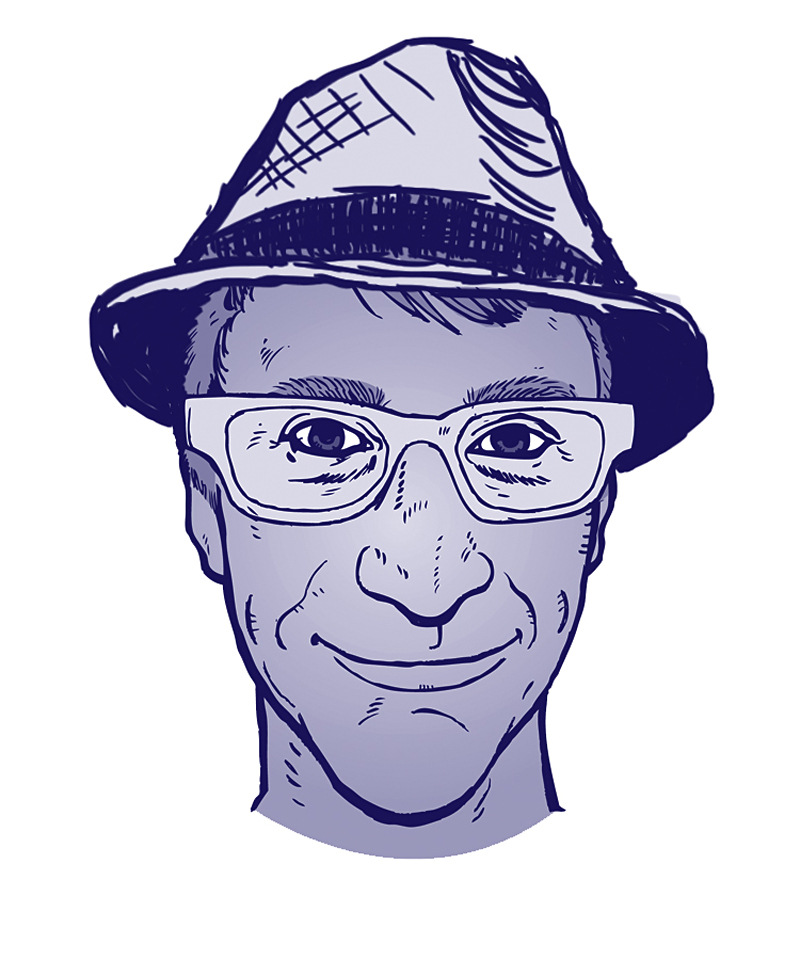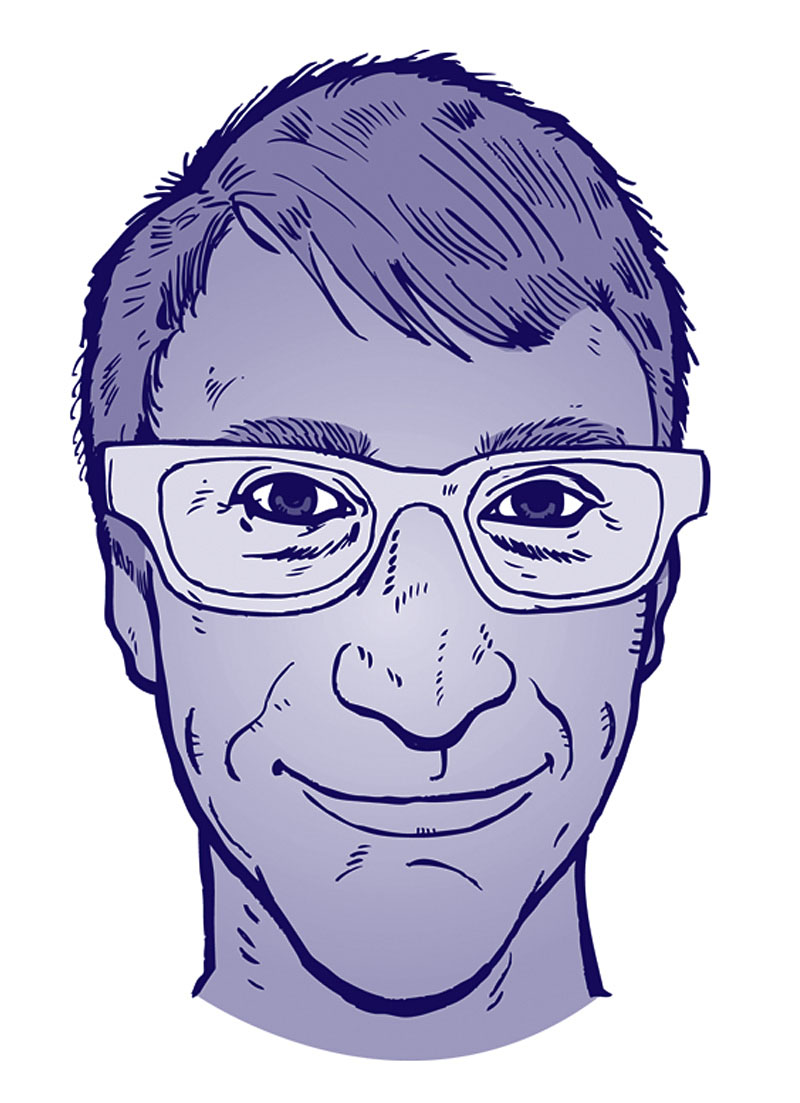“Why? Because they’re cheap and stupid.” Japhy Witte, aka the Sign Savant, is explaining what kind of sign-painting jobs he would turn down. He’s referring specifically to stickers and anything on vinyl sheeting. But cheap-and-stupid also describes logo-printed plastic sheets mounted over banks of fluorescent tubes, grimy Bud Light banners flapping in the wind, pixilated McNuggets on the sides of buses, and all the other relentlessly shitty signage in which our eyeballs are daily pickled. Witte’s one-man resistance movement for “real signs made by real hands” could be seen as a quirky underdog endeavor if his relentless work ethic hadn’t made his signage so ubiquitous.
You have almost certainly seen Witte’s work. He practically owns the West Seattle Junction, with signs for the Classic Barbershop, Shadowland, the West 5, the Senior Center Stop and Shop, Talarico’s, and Knows Perfume. He’s also done work for Moe Bar, Neumos, Mario’s Pizza, High 5 Pie, Fuel Coffee, Holy Cow Records, the new Broadway Sound Transit station, and Under the Needle Tattoo. And he restored the street clock formerly in front of Carroll’s Fine Jewelry downtown and now installed outside MOHAI.
Witte is a sturdily built 33-year-old with a red beard and an ironic smile. Born in Iowa, he spent his formative years in West Seattle, which he considers his hometown. As a child he was fascinated by what he saw in the background in old movies, and would try to figure out how signs and other simple details could create an entire world in the viewer’s mind. For a time, he attended art school in Minneapolis. “I didn’t do well by their standards,” he recalls, “but all the assignments did kick me into production mode.” He’s now been active as a sign painter for eight years.While movie set design might someday be a logical next step, his thing has always been signs. “People sometimes ask me if I also work on my own stuff,” he says. “This is my own stuff.”
Disdaining stencils, or even under-drawing to map out what he’s going to do in advance, Witte basically improvises signs for whatever location they’re going to fill. He had a youthful interest in street art, and combines the bold, space-filling swagger of graffiti with the clean lines of 1950s graphics. “Broad” and “direct” are words that come up often when he speaks about what he likes. His Rasta-like tranquility gives way to visible agitation when I mention Soviet movie posters. “You know what’s cooler than the Russian stuff? Way cooler? WPA posters. They were just so broad.” Success will be achieved when his signs outlive their current era and attain something of the battered old magnificence of, say, the Seattle Plumbing Supply Co. sign that’s still visible on the back of the 100-year old Provident Building as you ascend the northbound First Avenue onramp to the Alaskan Way Viaduct.
Witte’s affinity for the past is apparent in his lettering, the blocky capitals and sprightly italics bringing to mind an era of great-looking hats and giant tail fins. Judging by the variety of gorgeous, precisely rendered fonts on the sign for the Yen Wor Garden Restaurant in Greenwood, I assumed Witte must have bookshelves sagging with encyclopedias of typography. But his letters actually come directly out of his head. “I store a lot of shape information, and at the right time it comes out.” So he essentially invents fonts on the fly, and renders them in freehand while standing on a ladder? “I guess so,” he says, as if this fairly astonishing talent were commonplace.
Witte’s job brings him into a more direct confrontation with the environment than any studio-bound artist. In high humidity, “paint tacks quick and dries slow.” In the winter, “a thick coat can fog over and then the sheen is never right.” He must keep an eye on each day’s dew point, quality of light, chance of rain, and the coverage that any working space may or may not offer. He’s developed techniques for working on brick, glass, and the crappy old stucco of the Yen Wor.
The payoff is not just a decent living, it’s in creating something that becomes part of the civic environment, unconfined to the gallery or museum, and passes into collective memory. Witte’s signs both evoke a past of sturdy, hand-built things and simultaneously fade into that past. “Time is a loose thing with me,” he says. “I can’t tell if it goes forward or backward; and half the time I’d say it’s doing both at the same time.”








